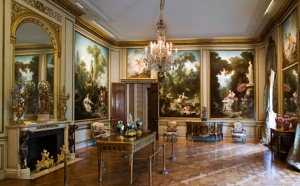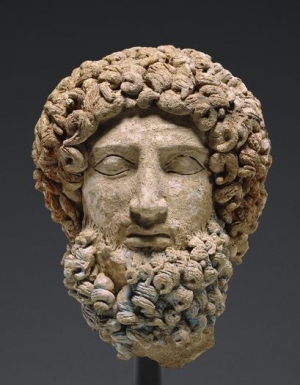|
Displaying items by tag: association of art museum directors
The Association of Art Museum Directors (AAMD) has released a list of protocols for museums to help protect artworks or archaeological objects that are currently at risk of destruction. “Protocols for Safe Havens for Works of Cultural Significance from Countries in Crisis” applies to works threatened not only by violent conflict or acts of terrorism — a growing concern, as ISIS has made clear — but also by natural disasters. The ongoing Syrian Civil War, however, seems to have served as the impetus for this issuing, with AAMD President Johnnetta Cole condemning the intentional damage as “reprehensible acts of violence and brutal vandalism.”
The Assn. of Art Museum Directors sanctioned the Delaware Art Museum on Wednesday for selling its 1868 William Holman Hunt painting “Isabella and the Pot of Basil” this week to help make debt payments and build its endowment.
The painting, part of the museum’s permanent collection, sold for $4.25 million at Christie's, an incident that left the museum directors association “deeply troubled and saddened.”
“Art museums collect works of art for the benefit of present and future generations,” read the statement from the AAMD, which has long said artworks should be deaccessioned only to generate funds to acquire other works of art and to enhance a collection. “Responsible stewardship of a museum’s collection and the conservation, exhibition, and study of these works are the heart of a museum’s commitment to its community and to the public.”
The National Academy Museum and School has let go several members of its staff, including both its registrars, the marketing director, the building manager and senior curator Bruce Weber. Dr. Marshall Price, the museum’s contemporary curator, left on his own volition in March to become a curator at the Nasher Museum of Art at Duke University. According to sources with knowledge of the situation, the National Academy’s director, Carmine Branagan, told the museum’s board that the reason the employees were let go was financial, but the real reason stems from disagreements within the institution over its future direction—namely, the promotion of Maurizio Pellegrin, a member of the school’s faculty, to the powerful position of creative director of both the National Academy School and its museum, which are located in a townhouse on Museum Mile.
The Delaware Art Museum will auction off one of its iconic Pre-Raphaelite paintings, "Isabella and the Pot of Basil" at Christie's in London next month, museum officials announced Tuesday. The William Holman Hunt oil painting, purchased by the museum in 1947, is one of as many as four works the museum will sell over the next several months to pay off construction debt and replenish its endowment. The Delaware museum boasts the most significant collection of Pre-Raphaelite works outside of the United Kingdom.
Museum officials have declined to release the names of the other works, explaining that it could hurt the market for private sales. They have promised not to sell any works acquired through gift or bequest. Winslow Homer's "Milking Time," one of the museum's most treasured works purchased in 1967, disappeared from its wall and collections database last month. Museum officials won't confirm that it is scheduled to be sold.

The Maier Museum of Art at Randolph College in Lynchburg, Virginia has been served a sanction by the Association of Art Museum Directors (AAMD) for selling off George Bellows’ “Men of the Docks.” The museum sold the painting to the National Gallery in London for $25.5 million in order to fund college operations. The Maier Museum purchased the Bellows work in 1920 with funds raised by Randolph College students.
The AAMD issued a statement on March 12 saying, “The prohibition against the sale of works of art from museum collections for such purposes is a violation of one of the most fundamental professional principles of the art museum field. That Randolph College, which is responsible for establishing policies for and overseeing the operations of the Maier Museum, continues to take such actions is a matter of grave concern to AAMD, art museums everywhere, and the public they serve."
In 2008, Randolph College was issued a censure by the AAMD for selling a Rufino Tamayo painting for $7.2 million. The AAMD, which represents 236 directors of North America’s leading art museums, has issued sanctions that will include instructions to its members to suspend any loans of works of art to and any collaboration on exhibitions and programs with the Maier Museum of Art.
The National Gallery purchased “Men of the Docks” with money from a fund established by the late philanthropist John Paul Getty. It is the first major American painting to enter the museum’s collection. The institution also owns works by American-born European artists and a minor, rarely-displayed piece by the American landscape painter George Inness.

In honor of Art Museum Day, approximately 180 art institutions across the United States will offer free entry or reduced admission rates on May 18, 2013. The event, which is in its 4th year, was planned by the Association of Art Museum Directors and is meant to unite the organization’s members. Many institutions will also offer special events and programming in honor of Art Museum Day, which coincides with International Museum Day for countries outside of the U.S.
Participating institutions include some of the most renowned museums in the country such as the Fine Arts Museums of San Francisco, the J. Paul Getty Museum (Los Angeles), the Phillips Collection (Washington, D.C.), the High Museum of Art (Atlanta), the Art Institute of Chicago, the Baltimore Museum of Art, the Institute of Contemporary Art, Boston, the Nelson-Atkins Museum of Art, the Museum of Modern Art (New York), and the Frick Collection (New York). A full list of participating museums can be seen here.
This year’s Art Museum Day theme is museums (memory + creativity) = social change.

For years, Italy, Greece, and other ancient lands have accused American museums of ignoring evidence that antiquities in their collections were looted from archaeological sites. Five years ago, the Association of Art Museum Directors (AAMD) responded by making the requirements for acquiring ancient works much more stringent. The revised guidelines advised American museums against acquiring works unless solid proof existed that the artifact, prior to 1970, was outside the country where it was discovered in modern times, or was legally exported from that country after 1970.
1970 remains an important date, as it marks the year UNESCO put a stop to the illicit trafficking of antiquities. The year is now regarded as the standard cutoff for collecting. Works that appear on the market without documentation dating back that far are much more likely to have been stolen, looted, or smuggled out of their countries.
On Wednesday, January 30, 2013 the AAMD announced a few additional restrictions for American museums. The AAMD, which has 217 member museums in North America, now requires institutions to post a public explanation on the AAMD’s website if they acquire any ancient works with spotty ownership records. In addition, the museum much provide an image of the object, any known provenance information, and an explanation as to why they decided to acquire the work. If an institution fails to comply, they will be subject to ethical scrutiny and possible expulsion from the AAMD.
Officials hope that the tighter acquisition regulations will discourage American museums from obtaining questionable artifacts while supporting transparency between the United States and nations of origin who may lay claim to the antiquities.
Over the last five years, the Cleveland Museum of Art has been at work on one of the largest building programs of any art institution in the country, a $350 million project that has been unveiled in sleek new stages and will be completed by 2013, adding 35,000 more square feet of gallery space.
But the museum has also been building in less visible ways and is set to announce on Monday the acquisition of two high-profile ancient artifacts that seem certain to draw attention not only to the institution’s expansion but also to the complicated long-running debate about antiquities collecting by museums.
|
|
|
|
|